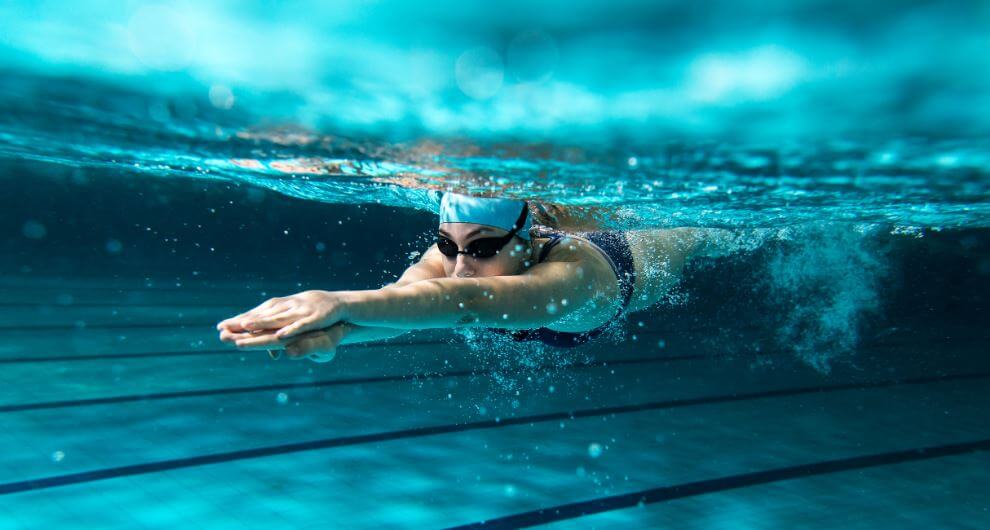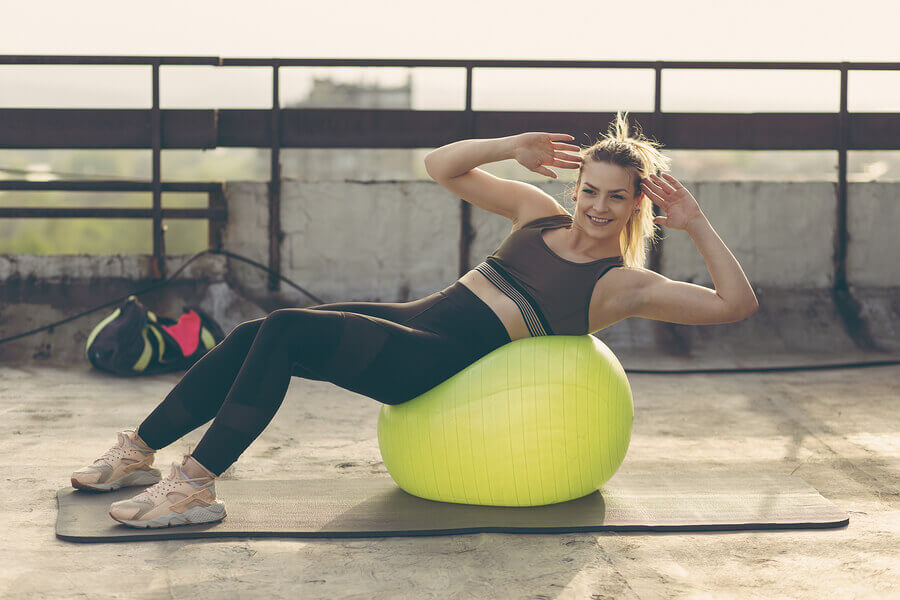What Sports Should You Practice If You Have Knee Pains?

Knee pains trigger warning bells. They might very well be the most debilitating kind of injury out there. A slight pain can bring activities to a halt because continuing can make it worse.
Problems with the meniscus or other knee parts usually require surgical intervention. To make matters worse, recuperation time often calls for a minimum of six months. But you can still practice certain sports despite having knee pains.
Swimming: the ideal sport if you have knee pains
When you swim, your knees don’t hold the weight of your body. Swimming keeps you on your side, meaning that your limbs don’t have to work to support your body.
Additionally, submerging yourself in water is ideal for relieving tendon and ligament pain. Water relaxes the body and creates a less demanding environment.
Physiotherapists often use pools to conduct their sessions for patients who’ve suffered an injury. The best part of swimming is that it works out the whole body.
In short, you can strengthen your body and tone your core without harming your limbs. Hands down, swimming is a great sport that can keep you active during physical rehab.

Biking is also an option for those with knee pains
Though biking mainly works out your legs, you can still get cycling even if you have knee problems. Biking actually works out your calves and quads. What’s more, biking will also strengthen your knees as well.
But, make sure you speak with a qualified doctor before partaking in biking. You should also avoid cycling competitions if you have a serious knee injury. Along with the risks of suffering a fall, the posture and demanding nature of such competitions could be less than beneficial for you.
However, biking on smooth, consistent terrains can have its benefits. Remember to keep the seat elevated to eliminate any kind of impact on your meniscus and ligaments.
Weightlifting isn’t completely out of the question
Weightlifting can still be possible if you only have minor knee pain. In this sport, athletes have a good amount of control over all movements. Running or long jumping, on the other hand, should be avoided if you have knee pain.
You can perform most core and arm routines or exercises with no problem. Some doctors even recommend exercising your legs with low-impact movements. As long as you control your movements, you shouldn’t have any complications.
Pilates is an effective low-impact sport
The philosophy behind pilates is clear: strengthen and improve flexibility from within. Following this logic, you work on posture and stretching without breaking your back. Just like swimming, pilates is highly recommended for recovering from injuries.
But of course, practicing pilates under an expert’s supervision is crucial. Pilates poses are adaptable to the physical situations of every participant, which is a great advantage. It’s a sport that’ll always work on balance, posture and stretching out your muscles.

Walking is another natural movement
After knee surgery, recovery will force you to keep still. But if you only suffer from knee pain, you’re still free to take a walk.
Of course, walking has a small impact on your knees. However, it’s a controlled movement that’s natural and low-intensity. To be safe, avoid high terrain if you’re experimenting pain.
What sports shouldn’t you practice if you have knee pain?
Avoid basketball, football, baseball and track and field. Practicing any of these sports could have several consequences if you suffer from knee pain. The movements and possible impacts could considerably worsen your injury.
High-impact sports are very risky if you have meniscus or ligament problems. Movements aren’t controlled and strains are a serious possibility. Lastly, any sport that implies running, sprints or jumping can also lead to serious injuries.
Knee pains trigger warning bells. They might very well be the most debilitating kind of injury out there. A slight pain can bring activities to a halt because continuing can make it worse.
Problems with the meniscus or other knee parts usually require surgical intervention. To make matters worse, recuperation time often calls for a minimum of six months. But you can still practice certain sports despite having knee pains.
Swimming: the ideal sport if you have knee pains
When you swim, your knees don’t hold the weight of your body. Swimming keeps you on your side, meaning that your limbs don’t have to work to support your body.
Additionally, submerging yourself in water is ideal for relieving tendon and ligament pain. Water relaxes the body and creates a less demanding environment.
Physiotherapists often use pools to conduct their sessions for patients who’ve suffered an injury. The best part of swimming is that it works out the whole body.
In short, you can strengthen your body and tone your core without harming your limbs. Hands down, swimming is a great sport that can keep you active during physical rehab.

Biking is also an option for those with knee pains
Though biking mainly works out your legs, you can still get cycling even if you have knee problems. Biking actually works out your calves and quads. What’s more, biking will also strengthen your knees as well.
But, make sure you speak with a qualified doctor before partaking in biking. You should also avoid cycling competitions if you have a serious knee injury. Along with the risks of suffering a fall, the posture and demanding nature of such competitions could be less than beneficial for you.
However, biking on smooth, consistent terrains can have its benefits. Remember to keep the seat elevated to eliminate any kind of impact on your meniscus and ligaments.
Weightlifting isn’t completely out of the question
Weightlifting can still be possible if you only have minor knee pain. In this sport, athletes have a good amount of control over all movements. Running or long jumping, on the other hand, should be avoided if you have knee pain.
You can perform most core and arm routines or exercises with no problem. Some doctors even recommend exercising your legs with low-impact movements. As long as you control your movements, you shouldn’t have any complications.
Pilates is an effective low-impact sport
The philosophy behind pilates is clear: strengthen and improve flexibility from within. Following this logic, you work on posture and stretching without breaking your back. Just like swimming, pilates is highly recommended for recovering from injuries.
But of course, practicing pilates under an expert’s supervision is crucial. Pilates poses are adaptable to the physical situations of every participant, which is a great advantage. It’s a sport that’ll always work on balance, posture and stretching out your muscles.

Walking is another natural movement
After knee surgery, recovery will force you to keep still. But if you only suffer from knee pain, you’re still free to take a walk.
Of course, walking has a small impact on your knees. However, it’s a controlled movement that’s natural and low-intensity. To be safe, avoid high terrain if you’re experimenting pain.
What sports shouldn’t you practice if you have knee pain?
Avoid basketball, football, baseball and track and field. Practicing any of these sports could have several consequences if you suffer from knee pain. The movements and possible impacts could considerably worsen your injury.
High-impact sports are very risky if you have meniscus or ligament problems. Movements aren’t controlled and strains are a serious possibility. Lastly, any sport that implies running, sprints or jumping can also lead to serious injuries.
All cited sources were thoroughly reviewed by our team to ensure their quality, reliability, currency, and validity. The bibliography of this article was considered reliable and of academic or scientific accuracy.
- Sañudo, Isabel. Guía para el cuidado de la rodilla. Fundación Mapfre. Extraído de: https://www.fundacionmapfre.org/fundacion/es_es/images/guia-de-cuidado-de-rodilla_tcm1069-219443.pdf
- Barbeito Gadea, E. Ejercicios para rodillas con dolor o hinchazón crónicos. Extraído de: http://www.barbeito.org/ejercicios/Rodillas.pdf
This text is provided for informational purposes only and does not replace consultation with a professional. If in doubt, consult your specialist.








